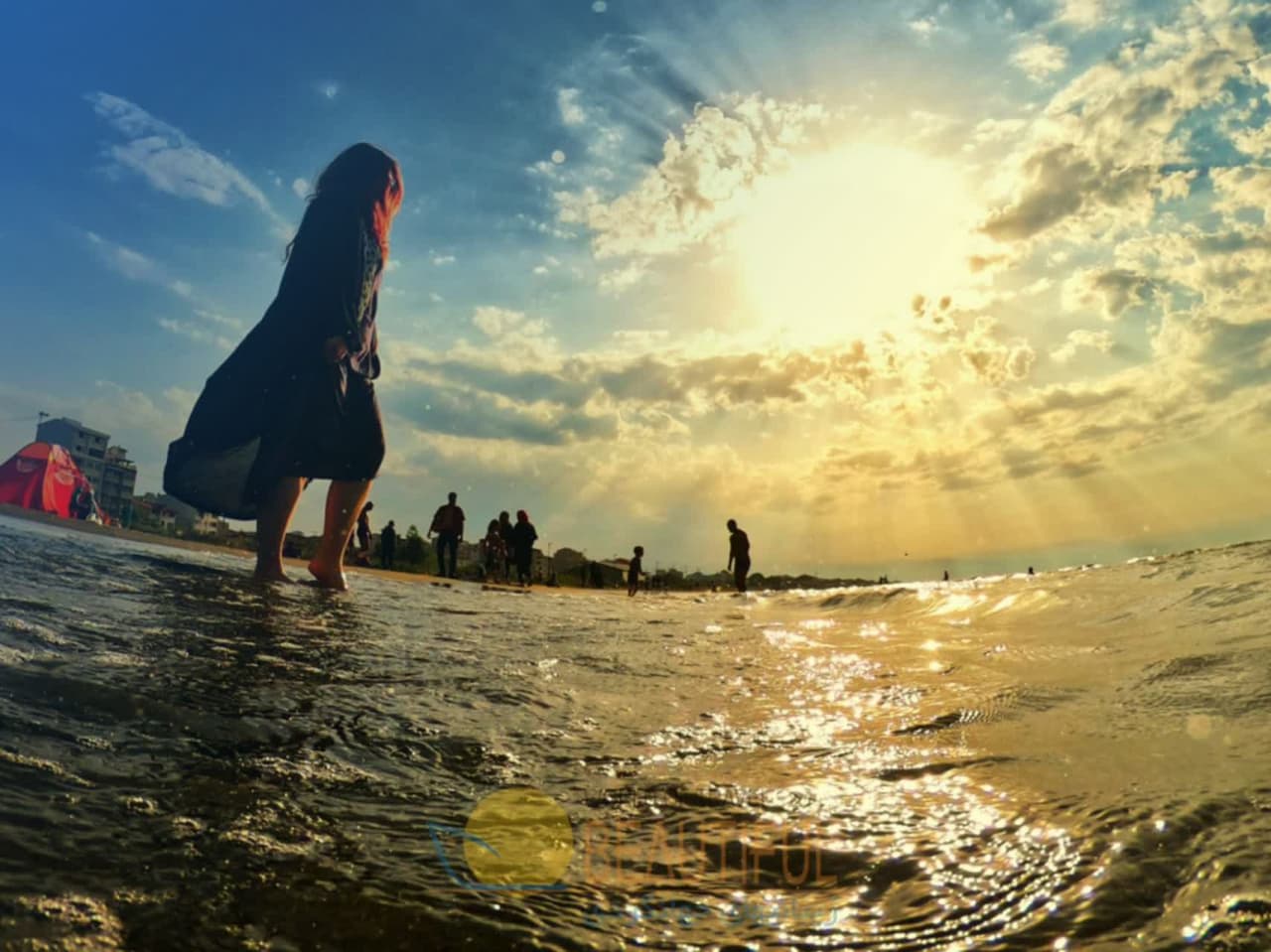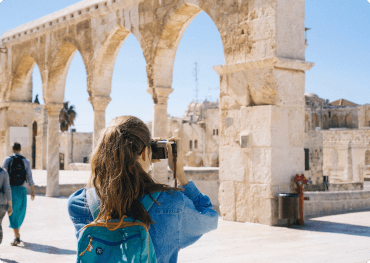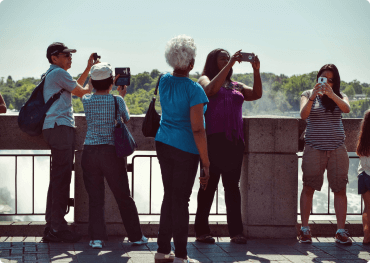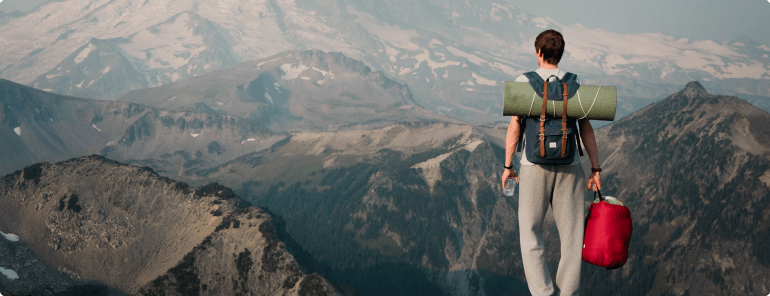
CU-115
Package Details
Day 1: Tehran
Arrival at Tehran, meet and assist at airport and then transfer to Hotel.
After check in hotel visit National Museum, Golestan Palace, Glass Museum, Carpet Museum.
O/N: Tehran.
The National Museum of Iran is located in Tehran, Iran. It is an institution formed of two complexes, including the Museum of Ancient Iran (Muze ye Irān e Bāstān) which was inaugurated in 1937, and the Museum of the (post-) Islamic Era (Muze ye Dowrān e (pasā) Eslāmi) which was inaugurated in 1972.
It hosts historical monuments dating back through preserved ancient and medieval Iranian antiquities, including pottery vessels, metal objects, textile remains, and some rare books and coins.
There are a number of research departments in the museum, including Paleolithic and Osteological departments, and a center for Pottery Studies.
Museum of Glass is one of the museums in Tehran is. This historic house built in Qajar era and in Tehran, Avenue C bar is located. The effect on 7 Persian date Ordibehesht 1377 with registration number 2014 as one of the national monuments has been registered. Museum of Glass Museum of Glass and pottery.The museum building is octagonal and the garden area is 7000 square meters. Exquisite designs and windows that are very well maintained, is reminiscent of the Seljuks architecture. The building is built on two floors and five Hall. Aussie one-two on the first floor and other rooms are located on the upper floor.
In Hall number two (crystals), the oldest glass and glass pipes and pottery is placed. Museum showcases designer Hans Hollein's Austrian engineering. The hanging of doors and stairs inlaid frame and brick facade work at 50 Nvast. Stucco museum consists of two periods: the time consistency, and Western style at the time of the Egyptian embassy and Ynhkaryhay second floor, which is related to the Qajar period.
The Golestan Palace is the former royal Qajar complex in Iran's capital city, Tehran.
The oldest of the historic monuments in Tehran, and of world heritage status, the Golestan Palace belongs to a group of royal buildings that were once enclosed within the mud-thatched walls of Tehran’s Historic Arg (citadel). It is a masterpiece of beautiful garden and buildings consist of collection of Iranian crafts and European presents from 18th and 19th century.
Golestan Palace Complex consists of 17 structures including palaces, museums, and halls. Almost all of this complex was built during the 200 years ruling of Qajarian kings. These palaces were used for many different occasions such as coronation and other important celebrations. It also consists of three main archives as the royal photographic archive collection 'Album khane', the royal library of manuscripts 'Ketabkhane Nosakhe khati' and the archive of documents 'Markaze asnad'.
Carpet Museum of Iran exhibits a variety of Persian carpets from all over Iran, dating from the 16th century to the present.
The museum's exhibition hall occupies 3,400 square meters (10,200 ft²) and its library contains 7,000 books.
The museum was designed by the last Queen of Iran, Farah Diba Pahlavi. The perforated structure around the museum's exterior is designed both to resemble a carpet loom, and to cast shade on the exterior walls, reducing the impact of the hot summer sun on the interior temperature.
Day 2: Tehran, Rasht, Anzali
Morning drive from Tehran to Rasht (330 km) via Qazvin. In Qazvin visit Chehel Sotun Palace or
Kolah Farangi edifice, continue to Rasht and then to Anzali. Visit Anzali Lagoon.
O/N: Anzali.
Chehel mansion Qazvin known as the pavilion building in the city of Qazvin . The building is the only remaining palace of the royal palaces of Shah Tahmasp times, in Qazvin city center at Azadi Square (Green Square) and the Safavid period and the pergola was known when it was the capital of Qazvin.
Anzali Lagoon is a coastal liman, or lagoon, in the Caspian Sea near Bandar-e Anzali, in the northern Iranian province of Gilan. The lagoon divides Bandar-e Anzali into two parts, and is home to both the Selke Wildlife Refuge and the Siahkesheem Marsh.Although the lagoon suffers from pollution, it is known as a good place for bird watching. The lagoon's water ranges from fresh near the tributary streams to brackish near the mouth into the harbor and the sea. Studies indicate that in the 19th and early 20th Centuries that the lagoon had a much higher salinity.The lagoon has decreased in size since the 1930s to less than a quarter of its former extent. However, in the last ten years (As of 2007) water salinity has increased both by the rise of the level of the Caspian Sea which has caused greater interchange of waters, and due to greater salt transport in incoming "fresh" water due to increased upstream irrigation.
Day 3: Anzali, Masouleh, Lahijan, Ramsar
Morning drive from Anzali to visit Masouleh Village and then drive to Lahijan and visit
Lahijan traditional Bazaar, continue to Ramsar, visit Caspian Coast line.
O/N: Ramsar.
Masuleh is a city in and the capital of Sardar-e Jangal District, in Fuman County, Gilan Province, Iran. At the 2006 census, its population was 554 individuals from 180 families.
Masuleh is approximately 60 km southwest of Rasht and 32 km west of Fuman. The village is 1,050 meters above sea level in the Alborz (or Elburz) mountain range, near the southern coast of the Caspian Sea. The village itself has a difference in elevation of 100 meters.
Although it has been written that the community was established around 10 AD, the province of Gilan has a long history. The first village of Masuleh was established around 1006 AD, 6 km northwest of the current city, and it is called Old-Masuleh (Kohneh Masuleh in Persian). People moved from Old-Masuleh to the current city because of pestilence and attacks from neighbouring communities.Masouheh-Rood-Khan is the river passing through the city, with a waterfall located just 200 meters away from the village. It's cut-off by snow during the winter months. Fog is the predominant weather feature of Masuleh.
Day 4: Ramsar, Chalous, Tehran
Morning after breakfast drive from Ramsar to Chalous and Namak Abrood, vist Caspian
Coastline and some beautiful forests of Abbas Abad. Evening back to Tehran.
O/N: Tehran.
Ramsar city with indescribable beauty in the western end of the province and the beautiful forest on the slopes of the Alborz and dream beaches of the Caspian Sea lie with its tourist attractions and accommodation, catering and recreational and shortest distance between the mountains and the sea with the title of the bride cities as poles tourism is important in the country and even the world.
Shahrak-e Namak Abrood, is a village in Kelarestaq-e Gharbi Rural District, in the Central District of Chalus County, Mazandaran Province, Iran. At the 2006 census, its population was 354, in 71 families. Shahrak-e Namak Abrud is a touristic village and has an aerial tramway which starts at the sea level near the shores of the Caspian Sea and ends on the top of the Alborz heights crossing dense forest area of northern Iran. There are numerous villa cities around it which form a vacation region for the people of Tehran.Located 12 km from East Chalus is new Namak Abroud Township covering some 650 hectares, with the Caspian Sea on its north and Madoban (the Alborz) on its south. Approximately 200 hectare violet and box-tree parks made the area very spectacular. Moreover, Madoban- the dense forest created a remarkably attractive landscape. The original plan was designed by consulting engineer; Mr. Dazz, Mr.Charkhab, Mr.Hovard Homfari. Hovard Homfari’s report said that Chalous-Ramsar Road bisected the area- with the northern side of the road dedicated to building villas, and Hite hotel and marinas suggested part and the related facility and apartment complex on its southern side.
Day 5: Departure
When arrival to Tehran, transfer to international airport and flight your home.
Details
Pellentesque accumsan magna in augue sagittis, non fringilla eros molestie. Sed feugiat mi nec ex vehicula, nec vestibulum orci semper. Class aptent taciti sociosqu ad litora torquent per conubia nostra, per inceptos himenaeos. Donec tristique commodo fringilla. Duis aliquet varius mauris eget rutrum. Nullam sit amet justo consequat, bibendum orci in, convallis enim. Proin convallis neque viverra finibus cursus. Mauris lacinia lacinia erat in finibus.
Pellentesque accumsan magna in augue sagittis, non fringilla eros molestie. Sed feugiat mi nec ex vehicula, nec vestibulum orci semper. Class aptent taciti sociosqu ad litora torquent per conubia nostra, per inceptos himenaeos. Donec tristique commodo fringilla.
- Specilaized Bilingual Guide
- Private Transport
- Entrance Fees
- Box Lunch,Water,Dinner and Snacks
Pellentesque accumsan magna in augue sagittis, non fringilla eros molestie. Sed feugiat mi nec ex vehicula, nec vestibulum orci semper. Class aptent taciti sociosqu ad litora torquent per conubia nostra, per inceptos himenaeos. Donec tristique commodo fringilla.
- Specilaized Bilingual Guide
- Private Transport
- Entrance Fees
- Box Lunch,Water,Dinner and Snacks
Pellentesque accumsan magna in augue sagittis, non fringilla eros molestie. Sed feugiat mi nec ex vehicula, nec vestibulum orci semper. Class aptent taciti sociosqu ad litora torquent per conubia nostra, per inceptos himenaeos. Donec tristique commodo fringilla.
- Specilaized Bilingual Guide
- Private Transport
- Entrance Fees
- Box Lunch,Water,Dinner and Snacks
Pellentesque accumsan magna in augue sagittis, non fringilla eros molestie. Sed feugiat mi nec ex vehicula, nec vestibulum orci semper. Class aptent taciti sociosqu ad litora torquent per conubia nostra, per inceptos himenaeos. Donec tristique commodo fringilla.
- Specilaized Bilingual Guide
- Private Transport
- Entrance Fees
- Box Lunch,Water,Dinner and Snacks
Pellentesque accumsan magna in augue sagittis, non fringilla eros molestie. Sed feugiat mi nec ex vehicula, nec vestibulum orci semper. Class aptent taciti sociosqu ad litora torquent per conubia nostra, per inceptos himenaeos. Donec tristique commodo fringilla.
- Specilaized Bilingual Guide
- Private Transport
- Entrance Fees
- Box Lunch,Water,Dinner and Snacks






















